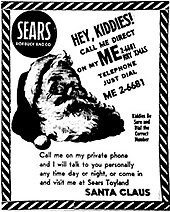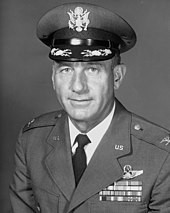NORAD Tracks Santa is an annual official program in which North American Aerospace Defense Command (NORAD) publishes the tracking of Santa Claus, who is said to leave the North Pole to travel around the world on his mission to deliver presents to children every year on Christmas Eve. The program starts on December 1, but the actual Santa-tracking simulation starts at midnight annually on December 24. It is a community outreach function of NORAD and has been held annually since 1955.
I have a vague recollection of having heard about this before, but I had no idea of its history nor of its current size. It’s a fun story and worth sharing.
Although NORAD claims to use radar and other technologies to track Santa, the website merely simulates the tracking of Santa and displays predetermined location information to users. The program follows the tradition of the September 1897 editorial “Yes, Virginia, there is a Santa Claus” in the New York Sun. The program’s inspiration eventually led to the creation of the Google Santa Tracker, which launched in December 2004.
On December 24, 1948, the United States Air Force issued a communique claiming that an “early warning radar net to the north” had detected “one unidentified sleigh, powered by eight reindeer, at 14,000 feet [4,300 meters], heading 180 degrees.” The Associated Press passed this “report” along to the general public. It was the first time that the United States Armed Forces issued a statement about tracking Santa Claus‘ sleigh on Christmas Eve, though it was a one-time event, not repeated over the next several years.

In 1955, a Sears department store placed an advertisement in the Colorado Springs newspaper The Gazette, which told children they could place a call to Santa Claus and included the number ME 2-6681. One digit was misprinted; this number was actually a number for Colorado Springs’ Continental Air Defense Command (CONAD) Center.

According to interviews, in December 1955, a call allegedly came through to CONAD. Colonel Harry Shoup answered the call. The caller, a little girl, asked Shoup if he was Santa Claus. Shoup, a serious man, initially thought the call to be a practical joke and responded gruffly. Upon realizing the child was serious, he softened his tone and asked to speak to the child’s mother; it was then that he learned of the advertisement. Some sources claim that he received numerous similar calls that night, in response to which he had his operators give children the “current location” for Santa Claus.
On Christmas Eve, when a member of Shoup’s staff placed a picture of Santa on a board used to track unidentified aircraft that December, Shoup saw a public relations opportunity for CONAD. He asked CONAD’s public affairs officer Colonel Barney Oldfield to inform the press that CONAD was tracking Santa’s sleigh. In his release to the press, Oldfield added that “CONAD, Army, Navy, and Marine Air Forces will continue to track and guard Santa and his sleigh on his trip to and from the U.S. against possible attack from those who do not believe in Christmas.”
Shoup did not intend to repeat the stunt in 1956, but Oldfield informed him that the Associated Press and United Press International were awaiting reports that CONAD again was claiming to be tracking Santa Claus. Shoup agreed that Oldfield should announce it again, and the annual tradition was born.
In 1958, the North America Air Defense Command (NORAD) took over the reporting responsibility from CONAD, and the reporting became more elaborate as the years passed. On December 24, 1960, for example, NORAD’s northern command post at Saint-Hubert, Quebec, Canada, provided regular updates of a supposed sleigh operated by “S. Claus” which it identified as “undoubtedly friendly”. During the evening, NORAD claimed that the sleigh had made an emergency landing on the ice of Hudson Bay, where Royal Canadian Air Force (RCAF) interceptor aircraft claimed to have been sent to investigate supposedly discovered Santa bandaging his reindeer Dancer’s front foot, after which the RCAF planes were said to have escorted him when he resumed his journey.
Eventually, NORAD, which was renamed the North American Aerospace Defense Command in 1981, openly published a hotline number for the general public to call to get updates on Santa Claus’ supposed progress.
NORAD relies on volunteers to make the program possible. Each volunteer handles about 40 telephone calls per hour and the team typically handles more than 12,000 e-mails and more than 70,000 telephone calls from more than two hundred countries and territories. Most of these contacts happen during the twenty-five hours from 2 a.m. on December 24 until 3 a.m. MST on December 25. A website called NORADSanta.org was established to allow project access for Internet users. Not only does NORAD simulate the tracking of Santa’s sleigh, but it also tells the user the exact amount of presents he is “delivering” at any moment on Christmas Eve. NORAD begins “tracking” at midnight MST, and even provides a depiction of Santa’s pre-delivery ritual. In December 2019, the noradsanta.org website received 8.9 million visitors.
Facebook: @noradsanta, Twitter: @noradsanta, IG: @noradtrackssanta_official
For more information about NORAD Tracks Santa, please visit www.noradsanta.org
For more information about NORAD, please visit www.norad.mil